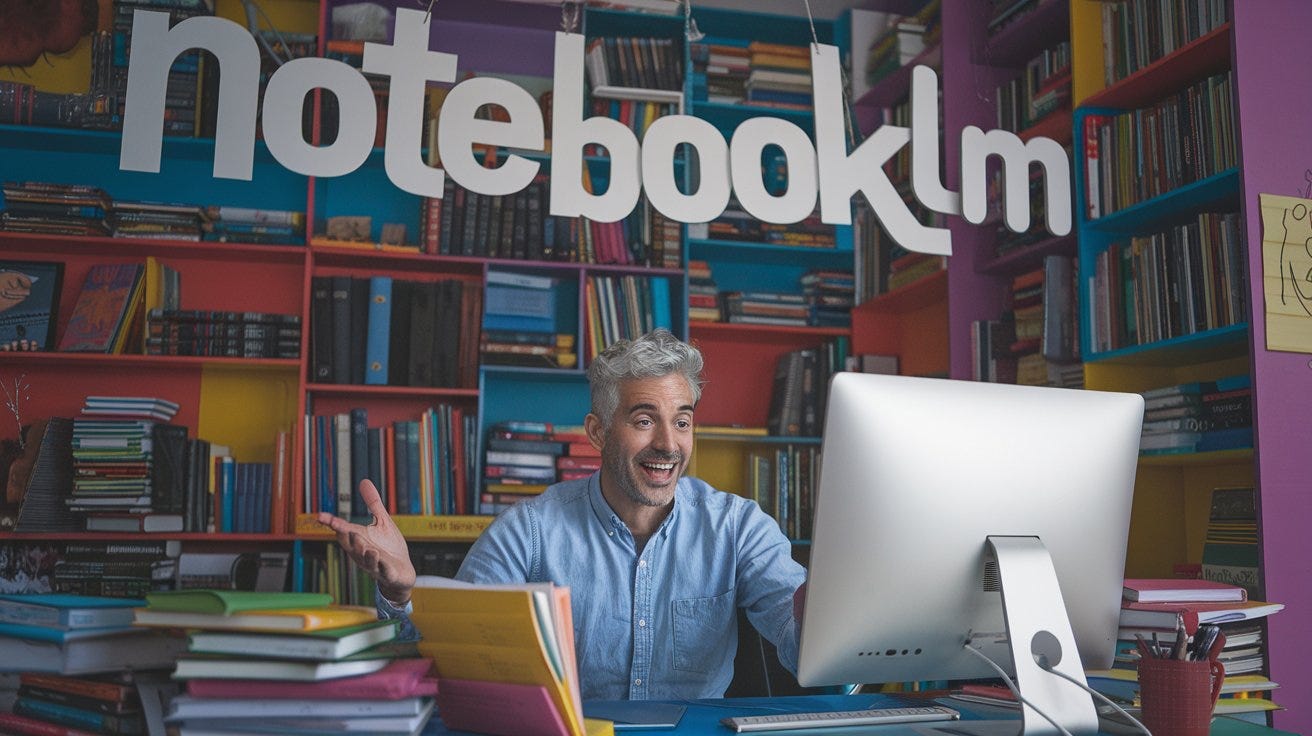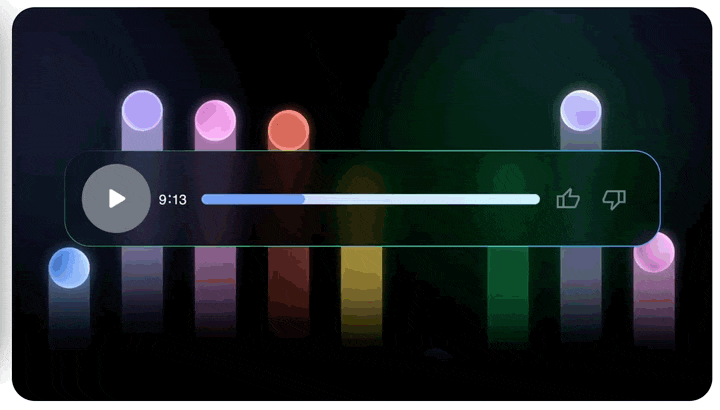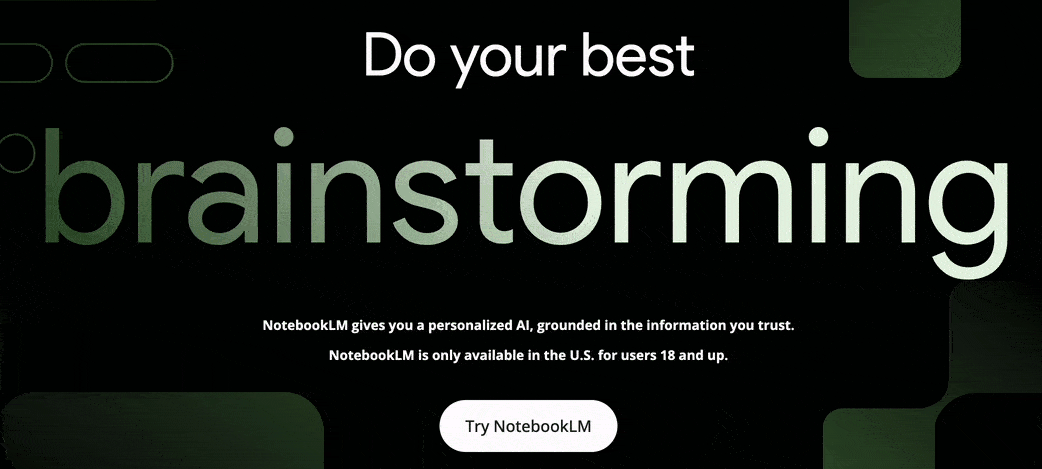How NotebookLM is improving🐬
Create custom audio summaries and apply AI to your notes in new ways

Google’s free NotebookLM made improvements on October 17 to what has become one of the most powerful ways to use AI. You can now customize its most popular feature — AI-generated audio summaries — to focus on specific topics, target audiences, or documents.
Read on for an updated overview of one of the year’s most surprising AI tools, including suggested ways to use it and a few limitations.
What it is in a nutshell: NotebookLM is a free Web-based AI service that helps you draw insights and learn from notes, documents, links, and recordings. It doesn’t do research on the Web or make up information. Instead it’s focused exclusively on analyzing the sources you upload.
Updates to Google’s fast-growing experiment
What’s new: Since I first covered NotebookLM, it’s improved substantially.
Use it in 200 countries. You no longer have to be in the U.S to join.
Upload more files. You can now add all sorts of doc, links and multimedia.
Use Gemini’s best model. You can now ask questions about images, charts, or diagrams that appear in any of the sources you upload.
More specific, accurate citations. When NotebookLM identifies something in your notes or documents, you can click on a citation link to see a more precise selection from the material in your own notes.
Join as a team. As of Oct 17, Google is inviting businesses, universities, and other organizations to join a new pilot program for team collaboration. It's initially free, but will eventually be a paid service.
New: Create customized audio posts
Customize Audio Summaries. Here’s one I generated to test out the brand new custom prompt feature. First I uploaded a YouTube recording of a workshop I led about AI for educators. Then I provided a few sentences of guidance to shape the focus of the audio clip, targeting educators skeptically curious about AI.
How it works: NotebookLM can turn anything you upload into an AI-generated podcast episode. Each notebook you create can include one of these “audio overviews” featuring a conversation between two AI voices. Here’s an example I made by uploading a Wonder Tools post I wrote about Perplexity.
Human-like voices. The quality of the voices and the AI summarization is so good that when I played a recording recently for a group, people assumed the hosts were human. Even before this week’s customization improvements, NotebookLM was generating buzz for the quality of its audio generation, as reflected in this Twitter/X thread.
Enthusiastic bots. NotebookLM’s algorithm instructs its AI audio hosts to be energetic. Even when given resumes and credit card receipts to summarize, the AI hosts still sound thrilled.
English only. NotebookLM can understand materials in close to 100 languages, and queries in numerous languages. The audio overviews are English-only for now because of voice-model limitations.
Mostly 7-15 minutes long. You can’t customize the audio length. If you provide brief material you may get a 3-minute audio result. Exhaustive texts may end up with 20-minute audio summaries.
How to get started
Sign up at notebooklm.google.com. It’s free with no usage limitations. Start by exploring sample notebooks included in your account.
Create a new notebook. You can then add:
Google Docs or Slides.
PDFs, text, or Markdown files.
YouTube or other Web links, or audio files.
Upload up to 50 sources into each notebook. Each can be up to 200mb and contain up to 500,000 words.
Create up to 100 notebooks. (I have ones for research, teaching, and hobbies).
Apply AI to a collection of notes or documents
NotebookLM’s AI can generate overviews of the material in each notebook. You can ask specific questions about your materials, or you can start with some default resources.
FAQ = Get a summary of questions and answers related to your material.
Table of Contents = See a roadmap of what’s in your notebook.
Study Guide = Get quiz and essay questions and a glossary of key terms.
Timeline = See an ordering of events and a list of people mentioned.
Briefing Doc = View a summary of primary themes, notable ideas, and quotes.
Chat. You can query your notebook just as you would chat with ChatGPT, Claude or any other AI bot. The benefit in NotebookLM is that it will provide a citation to the section of a document it relied on in answering your query.
Noteboard. Inside each notebook, there’s a bulletin-board style space for saving AI responses. You can use it to reflect on new ideas, annotate passages, or save observations that emerge as you interact with the AI.
Sponsored Message
Maximize Your Time: Master Books in Hours
Feeling overwhelmed by your reading list? Shortform simplifies your journey to success! Whether you’re diving into self-improvement, business, or psychology, they provide in-depth book guides with summaries, actionable insights and exercises. Start applying what you learn immediately.
Imagine mastering key lessons from Atomic Habits in just 2 hours—accelerate your career, boost your productivity, and achieve personal growth with ease.
Stay ahead of the curve with fresh summaries added weekly, and leverage our AI browser extension to quickly summarize articles and videos, freeing up valuable time for what matters most.
How NotebookLM’s creator suggests using it
I spoke recently with Steven Johnson, who helped develop NotebookLM. He’s a popular author of 14 non-fiction books, who has also been a tech founder and serves as Editorial Director of Google Labs. He shared with me a helpful approach to making the most of NotebookLM:
Create a master notebook. Put in the documents most important to you. A notebook can accept about 25 million words, enough to store a lifetime’s worth of thinking and writing. You can then query that notebook to surface your past ideas, research or writings that relate to current projects.
Create project-specific notebooks. Dump in your most recent 10 docs, slides or other materials and use the notebook as a reference resource.
Create an audio overview to review the week. Put in transcripts of your recent meetings and read the summary briefing and/or listen to the overview on your commute to review key conversations.
Some new ways to use NotebookLM
Create a collection of your favorite quotes or reading highlights. I exported my collection of thousands of Readwise highlights to Google Docs, then imported those into a new NotebookLM.
Now I can use AI to explore a decade’s worth of passages I’ve highlighted in Kindle books, online articles, and podcasts.1 I can draw inspiration from these quotes and ideas in new ways that inform my writing and teaching. Listen to an audio summary of this collection I asked NotebookLM to personalize for me.😳
Create an AI-enabled journal. Export your past musings to make it easy to search for patterns in your past thinking.
Turn class or reporting notes into AI-powered idea seeds. Convert anything you’ve learned into an AI-enhanced notebook. It’s easy to then generate study guides, FAQs, or query the notebook about various themes you’ve been exploring.
Build on your own notes
Clarify, critique, or expand on notes. You can highlight any notes on your noteboard and ask for them to be clarified, critiqued, combined, or summarized. Or you can ask for an outline based on a note, or for it to suggest related ideas.
Dialogue with your notes. When you’re writing something or preparing a presentation, use NotebookLM to assist in exploring your materials. Initiate a dialogue with your own notes. This ability to surface and connect valuable ideas otherwise hidden deep within my notes or documents is what I find most valuable about NotebookLM.
Query an individual document or a full collection. NotebookLM generates a summary for each source you add. It also adds subject tags based on the content. You can query one or more documents or the full notebook.
Caveats
NotebookLM was originally labeled an “experimental” service, indicating that Google could potentially pull the plug.2 The Oct 17, 2024 announcement of a new paid business service may be a good sign that the company envisions a sustainable future for this service.
NotebookLM doesn’t yet work with Google Sheets or other data formats.
No mobile app, though the mobile Web version works well for simple queries.
Available only to people 18 and older.
Google doesn’t train its models on your material. But if you’re skeptical about the company, avoid uploading private material.
👉 Alternatives to NotebookLM
Additional resources
Read Google’s announcement about the new features.
Watch Steven Johnson use NotebookLM to create a detailed lesson plan for an urban planning class.
Watch Productivity expert Tiago Forte explain how he uses NotebookLM.
I highlight podcasts using Snipd. Here’s how and why I do that.
Google has a history of closing promising projects like Google Buzz, Wave, Reader, Songza, Fridge, Picasa, Picnik, and Aardvark. For more, check out Killed by Google.






I hadn't heard of this before I read this newsletter, and it's a game-changer. As a writer, I can lose myself in the flow of writing, and my fear is that I will write something very specific about a character and then... forget? But by uploading my novel and with specific prompts, I was able to collate profiles on every named character in the book and can now review at my leisure. I'm trying to figure out how else to utilise this tool, because I want SUPPORT, not REPLACING. There's no space for AI in creative endeavours, but as a tool to interrogate "data", I think it's diabolically useful.
I hosted a webinar a couple weeks ago for the Media Education Lab on NotebookLM and was similarly impressed. Apparently future versions are going to allow a live person to interact with the two automated panelists, which would be pretty cool. It certainly does raise issues about synthetic content, and how the quality of these tools is such that it has already become impossible to distinguish an automated robot from a human being, at least some cases.